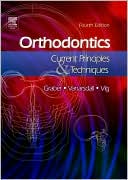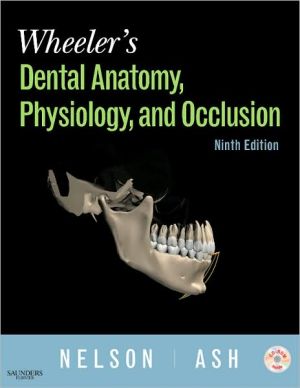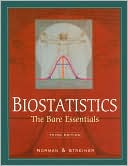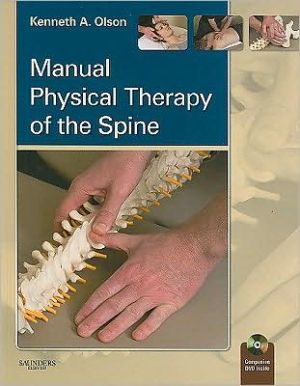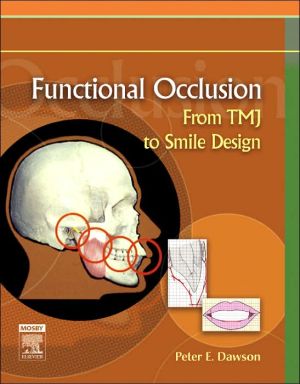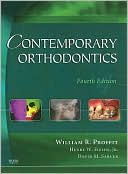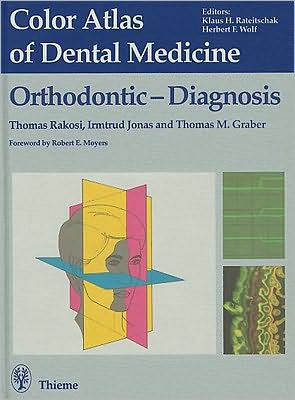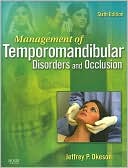Orthodontics: Current Principles and Techniques
Search in google:
The world's bestselling orthodontics reference, Graber's Orthodontics offers all the essentials of orthodontic care — from diagnosis to treatment. This edition includes the latest evidence-based research and concepts of today's orthodontics, with coverage of treatment methods ranging from basic to highly complex situations. Written by a team of world-renowned authors, this book offers practical information that you can use every day.Comprehensive coverage of multiple appliances and materials in orthodontics today ensures that the readers learn everything they need to know for their own practice.World-renowned orthodontic researcher, academic, and practitioner contributions add credibility and expertise to each chapter of the text, making it an authoritative resource.Extensive references allow readers to delve further into orthodontic research or study topics related to the evidence-based research presented in each chapter.Tables and boxes throughout the text offer streamlined information from the text and elaborate on the concepts illustrated in the figures.The extensive collection of illustrations and clinical photographs demonstrate case studies and treatment options in detail, offering visual evidence of orthodontic techniques, problems, and solutions.New case studies complement most chapters and demonstrate the most current techniques being utilized in the field today.New information on the orthodontist's function on a craniofacial team offers discussion of the orthodontist's role in a larger process; this content comes from new author Dr. Katherine W.L. Vig, an expert on craniofacialteams.Section on genetics promotes understanding of how genetic factors, in concert with environmental factors, influence the development of malocclusion.Chapter on cranial morphology adds another important concept that orthodontists must take into consideration when planning treatments.Indirect bonding content explains the system that has been developed, discusses its advantages, and presents step-by-step instructions on how to understand and utilize the process and materials.Coverage of fiber-reinforced composite (FRC) applications provides the reader with knowledge of this important topic.Chapter on SPEED appliance and philosophy presents a comprehensive discussion of self-ligating brackets and informs readers how the appliance transcends limitations and provides efficiency and precision tooth positioning.Distraction osteogenesis information clarifies the use of this method to minimize or avoid potential complications with proper preoperative planning and execution.Material on retention appliances is expanded, allowing readers the opportunity to learn more about the process of determining patient suitability for them.The brand new full-color design and the addition of full-colorChapter on In-Ovation Brackets updates information on fully adjusted appliances with specific evaluation of the appliance's advantages and an exemplary case study. Kevin L. Boyd This is the fourth version, second edition of a graduate text in orthodontics that was first published in 1969. This newly updated orthodontic classic incorporates recent advances in the field, most notably interceptive orthodontic treatment in the mixed dentition. The purpose is to provide an overview of orthodontic knowledge and clinical techniques that is unique and practical for students, educators, and practitioners. This book is a valuable resource for the dental profession. It meets its objectives. The audience includes students, educators, and clinicians. Authors and contributors are all recognized as leading authorities in their field. Graphs, charts, illustrations, and clinical photographs are well laid out and are appropriate visual additions to written text. The references are current and appropriate. The preface is very descriptive and helpful in summarizing chapters. The overall appearance is simple, clean, and appropriate. This text is a definite asset for the student, educator, and practitioner of orthodontics. Previous versions have established the book as a reliable and authoritative resource of orthodontic knowledge. The historical basis for current orthodontic trends are thoroughly delineated in the early chapters, which adds to the authors' scientific credibility. It is also very user friendly.
Ch. 1Special considerations in diagnosis and treatment planning3Ch. 2Craniofacial imaging in orthodontics71Ch. 3Genetics and orthodontics101Ch. 4The upper airway and cranial morphology117Ch. 5Tissue reactions in orthodontics145Ch. 6Bone physiology, metabolism, and biomechanics in orthodontic practice221Ch. 7Application of bioengineering to clinical orthodontics293Ch. 8Orthodontic therapy and the patient with temporomandibular disorder331Ch. 9Biomaterials in orthodontics345Ch. 10Statistics for the orthodontist391Ch. 11Interceptive guidance of occlusion with emphasis on diagnosis405Ch. 12Functional appliances493Ch. 13Treatment of patients in the mixed dentition543Ch. 14Bonding in orthodontics579Ch. 15Precise bracket placement : effective and efficient indirect bonding661Ch. 16The Tweed-Merrifield edgewise appliance : philosophy, diagnosis, and treatment675Ch. 17Self-ligation orthodontics with the SPEED appliance717Ch. 18Treatment of the face with biocompatible orthodontics753Ch. 19The in-ovation bracket for fully adjusted appliances833Ch. 20Nonextraction treatment855Ch. 21Treatment options for sagittal corrections in noncompliant patients879Ch. 22Periodontal-orthodontic interrelationships901Ch. 23Adult interdisciplinary therapy : diagnosis and treatment937Ch. 24Orthodontic aspects of orthognathic surgery993Ch. 25Craniofacial distraction osteogenesis : basic principles and clinical applications1053Ch. 26The orthodontist's role in a cleft palate-craniofacial team1097Ch. 27Retention and relapse1123Ch. 28Clear plastic appliances for retention and tooth movement1153
